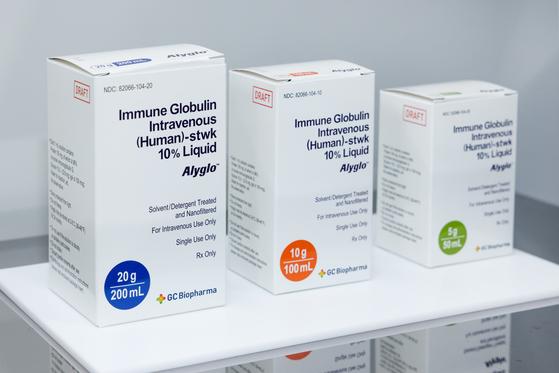Alyglo Dosage
Generic name: Human immunoglobulin G 100mg in 1mL
Dosage form: intravenous injection
Medically reviewed by Drugs.com. Last updated on Dec 15, 2023.
For intravenous use only.
2.1 Dose
| Dose | Infusion Number | Initial Infusion Rate | Maintenance Infusion Rate |
| 300 ‒ 800 mg/kg body weight every 21 or 28 days | For the 1st Infusion | 1 mg/kg/min (0.01 mL/kg/min) |
Double the infusion rate every 30 minutes (if tolerated) up to 8 mg/kg/min (0.08 mL/kg/min) |
| 300 ‒ 800 mg/kg body weight every 21 or 28 days | From the 2nd Infusion | 2 mg/kg/min (0.02 mL/kg/min) |
Double the infusion rate every 15 minutes (if tolerated) up to 8 mg/kg/min (0.08 mL/kg/min) |
Significant differences in the half-life of IgG among patients with PI may necessitate the dose and frequency of immunoglobulin therapy to vary from patient to patient. Determine the proper dose and frequency by monitoring clinical response.
Measles Exposure
If a patient has been exposed to measles, consult with physician to administer an extra dose of IGIV as soon as possible and within 6 days of exposure. A dose of 400 mg/kg should provide a serum level > 240 mIU/mL of measles antibodies for at least two weeks.
If a patient is at risk of future measles exposure and receives a dose of less than 530 mg/kg every 3 - 4 weeks, then the dose should be increased to at least 530 mg/kg. This should provide a serum level of 240 mIU/mL of measles antibodies for at least 22 days after infusion.
2.2 Preparation and Handling
- ALYGLO (immune globulin intravenous, human-stwk) is a clear or slightly opalescent, colorless or pale yellow solution. Inspect parenteral products visually for particulate matter and discoloration prior to administration, whenever solution and container permit. Do not use ALYGLO if the solution is cloudy or turbid, or if it contains particulate matter.
- Do not freeze, and do not use any ALYGLO that has been frozen.
- Do not shake.
- Do not mix ALYGLO with other IGIV products or other intravenous medications.
- Do not dilute.
- ALYGLO should be at room temperature at the time of administration. Allow refrigerated product to come to room temperature before use.
- Do not use beyond the expiration date on the product label.
- ALYGLO vial is for single use only. Due to the absence of anti-microbial preservatives, promptly administer ALYGLO after piercing the cap. Dispose of partially used or unused product.
- Infuse ALYGLO using a separate infusion line.
- An infusion pump may be used to control the rate of administration.
- ALYGLO may be pooled under aseptic conditions into sterile infusion bags. Infuse within 24 hours after pooling.
2.3 Administration
- Monitor vital signs throughout the infusion. Slow or stop the infusion if adverse reactions occur. If symptoms subside, the infusion may be resumed at a lower rate that is comfortable for the patient.
- Ensure that patients with pre-existing renal insufficiency are not volume-depleted. For patients at increased risk of renal dysfunction or thrombotic events, administer ALYGLO at the minimum infusion rate practicable, and consider discontinuation of administration if renal function deteriorates [see Boxed Warning, Warnings and Precautions (5.2, 5.3)].
- After administration, the infusion line may be flushed with either normal saline or 5% dextrose in water.
More about Alyglo (immune globulin intravenous)
- Check interactions
- Compare alternatives
- Drug images
- Latest FDA alerts (1)
- Side effects
- During pregnancy
- FDA approval history
Patient resources
Other brands
Privigen, Octagam, Panzyga, Gammaplex, ... +7 more
Professional resources
Other brands
Privigen, Octagam, Panzyga, Gammaplex, ... +5 more
Related treatment guides
Further information
Always consult your healthcare provider to ensure the information displayed on this page applies to your personal circumstances.


